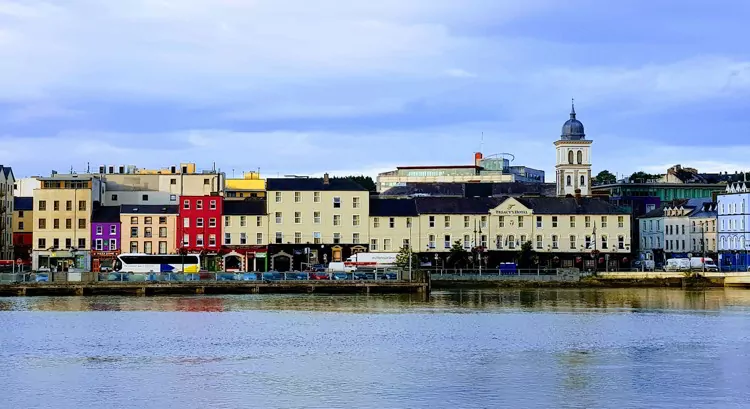
Two Things To Understand Before Buying Property Overseas
What Frank Lloyd Wright Taught Me About Other People’s Money
My first real estate purchase was in Chicago.
I was renting in a three-flat when the owner sent a notice to all the tenants informing them he was listing the property for sale. It was a Frank Lloyd Wright building. My apartment was big, the layout comfortable. I didn’t want to give it up, so, rather than considering where he might move, I began figuring out a way to buy the building where he was living.
Unfortunately, the people living on the top floor had the same idea and approached the owner with a plan to convert the building into condos so they could buy their apartment. That inflated the price in the seller’s mind.
Undaunted, I put together a spreadsheet to see if I could make the numbers work for an outright purchase. I’d continue living in my apartment, paying myself rent, and rent out the other two. I calculated that I could charge more for those other units, as the current rents were below market.
Banks were offering special programs for first-time buyers. I knew I could get a loan. The question was whether the cash flow math worked. Would the three apartments generate enough income to support the mortgage?
Using leverage to buy a rental property is a common strategy in the United States. The theory is that the rent pays back the bank, month by month, and covers your other expenses, hopefully with some cash flow left over. Meanwhile, equity builds up as the mortgage gets paid down… while, in theory, the property’s value appreciates.
How to buy with other people’s money (OPM) is the first strategy you learn at any real estate investment seminar.
I obtained a mortgage with a loan to value (LTV) of 98%. However, it wasn’t for the building where I was living. My neighbor’s condo plan botched that deal. But the seed had been planted and the spreadsheet created. My math showed me what to do next.
I found a real estate agent and explained my parameters. Today I make buy decisions based on projected rental yields, gross and net. For this first purchase I didn’t think beyond paying the mortgage.
I spent four months considering dozens of properties and entering the details for each into my spreadsheet. Two-flat buildings never came close to break-even cash flow, though I figure I probably could have made the math work for many of the buildings I looked at work by increasing my own rent. But I didn’t want to do that.
As it has often (and as I like to point out for Kathleen’s benefit), my stubbornness paid off. I kept active in the market, looking daily at new listings, until I found a property that fit my requirements. It was a building that had come back onto the market after the woman who had signed a purchase contract for it failed to qualify for financing.
The price was good. The location was within the zone I had targeted. Most important, the numbers worked. I could keep paying myself the same rent and would be able to cover the mortgage even without increasing the rent for the other two apartments.
Moving To Ireland
Two-and-a-half years later, I met Kathleen. Coincidentally, we were both making plans to move to Ireland.
We were engaged two-and-a-half months after we met and married two months after that. Then we moved together—me from Chicago, Kathleen from Baltimore—to Waterford.

Waterford
The timing was ideal for selling my three-flat. The Chicago market was frothy. I set the price above the going market rate, and the building still sold quickly. I walked away with 80% more than I’d paid less than three years earlier.
The leveraged return on my 2% down payment was 3,000%. I had turned US$5,000 into US$150,000 after closing costs and commissions. And I’d had positive cash flow from rental income every month I’d owned the building.
It was an as-good-as-it-gets property investment experience, first because I made the buy decision based on cash flow math and second because I was able to leverage the purchase.
Buying with Other People’s Money (OPM) can, as any property investor will tell you, mean an upside, but it comes with risk. It doesn’t matter what your property is worth if the cash flow it generates doesn’t cover the mortgage. I’ve known too many U.S. real estate investors who have lost too many properties when market changes collapsed their highly leveraged portfolios.
Even though I’ve benefited from it, I don’t preach the OPM mantra. Twenty-five years of experience across 24 markets worldwide, including the United States, have taught me to respect the fundamentals. I don’t buy unless the projected net rental yields translate into cash flow enough to support the investment.
Never Invest For 2% Thinking Appreciation Will Make Up The Difference
After I sold that three-flat in Chicago and we made our move to Ireland, Kathleen and I began analyzing Irish real estate markets looking for investment opportunities.
At the time (1999), most rental properties in this country were generating net yields of 2% or less. Dismal. But the Irish didn’t care. Property values across the country had been appreciating 10% a year or more for years, and the Irish expected that to continue indefinitely.
They were investing and re-investing using OPM. Banks were lending easily (though not yet at 2005 levels, when 110% LTV mortgages—the extra 10% to cover the “stamp duty” required at closing—were being handed out like chocolate buttons to tykes at Christmas).
Investors were subsidizing mortgage payments out of pocket because rents weren’t doing the job. They saw it as a sensible ongoing investment in the windfall appreciation they were certain would come.
In 2008, Irish property values fell 50% and more, depending on the region of the country, almost overnight. Most of those 110% LTV-financed properties were returned to the bank. Didn’t seem so clever any longer to top-up mortgage payments out of pocket.
Leverage isn’t always a good idea and, when investing overseas, it isn’t always or always easily available. You do have realistic financing options in some markets and under some circumstances, but you should understand as you set out to start and then grow your global cash flow portfolio that OPM isn’t always an option. Sometimes that’s for the best.
Ignore Gross Returns Because It's Only The Net That Matters
Here’s the second thing to understand before you begin investing in real estate overseas…
The math is the same whether you’re calculating the rental yield for a property in Arizona or Argentina. The expenses, though, can be different, and this is a critical factor to take into account when projecting cash flow from a property investment overseas.
Calculate what your return will be gross and then ignore that figure. Only the net matters.
In Ecuador, for example, the tenant pays the home owner’s association (HOA) fee on top of the rent. Some countries impose a withholding tax on gross rental income when it’s paid; you recover any overpayment by filing an annual tax return. And management fees for short-term rentals can range from 15% to 35% and more, depending on the market.
A gross rental yield of 25% sounds great until you calculate the expenses and find that it nets to 3% after backing out management splits, building fees, and other higher-than-typical expenses for that particular property. Looking only at the top-line return, you could dismiss a gross rental yield of 12% that nets to 6% in the same market.
More on the fundamentals behind making smart and successful property investments overseas on Thursday.
Lief Simon



